
Lesson 2. Samurai
Topic Question: What is the historical background of the samurai?
No.1
First, try answering the question yourself. – The instructor will provide advice on vocabulary, grammar, and expression corrections.
Sample Answer – Let’s read aloud – The instructor will check your pronunciation and accent.
The samurai were the military nobility and officer caste of medieval and early-modern Japan. From the late 12th century, they became the highest-ranking social caste under the Japanese Emperor and the Shogunate. Originally, samurai were archers who fought on horseback, their role expanded over time to include leading battles and governing regions. They lived by the “Bushido” code, which emphasized virtues such as loyalty, honor, and discipline. The era of the samurai effectively ended during the Meiji Restoration in the late 19th century when the samurai class was abolished in favor of a modern, conscripted army. However, the legacy and influence of samurai culture continue to be felt in Japan and around the world.
No.2
5 Words to Learn and Their Meanings – Pronounce the Words Correctly (Pronunciation Training) + Make Sentences Using the Words Instantly
- Nobility (貴族): The group of people belonging to the noble class in a country, especially those with a hereditary or honorary title.
In medieval Europe, the nobility owned vast amounts of land and had significant political power.
- Archers (弓兵): People who use a bow and arrows.
The archers took their positions on the castle walls as the enemy approached.
3. Bushido (武士道): The code of honor and morals developed by the Japanese samurai.
Bushido influenced the samurai’s conduct in both warfare and in peacetime.
4. Meiji Restoration (明治維新): The period in the late 19th century when Japan underwent rapid modernization and industrialization.
The Meiji Restoration transformed Japan from a feudal society into a world power.
5. Legacy (遺産): Something left or handed down by a predecessor.
The legacy of ancient civilizations can be seen in their art, laws, and structures.
No.3
Key Expressions and Example Sentences – Pronounce the Example Sentences of Key Expressions Correctly (Pronunciation Training) + Make Sentences Using the Key Expressions Instantly
- Military nobility (軍事貴族)
The military nobility played a crucial role in the governance and defense of the realm. - Leading battles (戦いを導く)
Famous generals from history are celebrated for leading battles that changed the course of their nations. - Abolished (廃止される)
The practice was eventually abolished after widespread criticism and calls for reform.
No.4
Discussion and Exchange of Opinions on the Sample Answer
Instructor: How do you think the values of Bushido have influenced modern Japanese society? Are there aspects of samurai culture that are still relevant today?
Student: [Opinions of students]
No.5
Free Discussion on the topic
Let’s explore how the image of the samurai has been romanticized in films and literature. Do you think these portrayals accurately reflect historical reality? How do samurai movies or books impact your perception of Japanese culture?

Lesson 1 : Tea Ceremony
Topic Question: Can you explain the significance of the tea ceremony in Japanese culture?
No.1
First, try answering the question yourself. – The instructor will provide advice on vocabulary, grammar, and expression corrections.
▮ Sample Answer – Let’s read aloud – The instructor will check your pronunciation and accent.
The Japanese tea ceremony, also known as “Chanoyu” or “Sado,” is more than just drinking tea. It is a spiritual and philosophical ritual that embodies harmony, respect, purity, and tranquility. Originating in the 15th century, it reflects the Zen Buddhist principles and emphasizes the beauty of simple and transient things. The ceremony is meticulously planned and performed, involving specific utensils, attire, and procedures. Each element, from the preparation to the serving of matcha (powdered green tea), is symbolic, aiming to create a moment of harmony between the host and guests. It celebrates the art of hospitality and mindfulness, making it a profound cultural tradition in Japan.
No.2
5 Words to Learn and Their Meanings – Pronounce the Words Correctly (Pronunciation Training) + Make Sentences Using the Words Instantly
- Spiritual (精神的な): Relating to or affecting the human spirit or soul.
Meditation is a spiritual practice that helps me find inner peace. - Philosophical (哲学的な): Relating to the study of the fundamental nature of knowledge, reality, and existence.
We had a philosophical discussion about the meaning of life. - Meticulously (細心の注意を払って): Showing great attention to detail; very careful and precise.
She meticulously planned her trip to ensure everything went smoothly. - Symbolic (象徴的な): Serving as a symbol of something.
The olive branch is symbolic of peace. - Mindfulness (マインドフルネス): The quality or state of being conscious or aware of something.
Practicing mindfulness can greatly reduce stress and anxiety.
No.3
Key Expressions and Example Sentences – Pronounce the Example Sentences of Key Expressions Correctly (Pronunciation Training) + Make Sentences Using the Key Expressions Instantly
1. Embodies (を体現する)
This painting embodies the artist’s emotions during a difficult time in his life.
2. Zen Buddhist principles (禅仏教の原則)
The concept of simplicity in Zen Buddhist principles has influenced my lifestyle.
3. Art of hospitality (おもてなしの芸術)
Japanese culture is renowned for its art of hospitality and meticulous attention to guests’ needs.
No.4
Discussion and Exchange of Opinions on the Sample Answer
Instructor: What do you think about the philosophical aspects of the tea ceremony?
Do you see any value in incorporating such traditions into modern life?
Student: [Opinions of students]
No.5
Free Discussion on the topic
Let’s discuss how traditional rituals like the tea ceremony can play a role in today’s fast-paced society. Can adopting aspects of such ceremonies help improve our quality of life or mindfulness in the modern world?
アメリカ人が毎日使うスラング・イディオムを学ぶ!
ネイティブのように話せるようになるのも”in no time”(あっという間)!

ネイティブのリアル英語 in the pink 絶好調である
「絶好調である、とても元気だ」って英語ではどう言うんでしょうか?
アメリカでは ”in the pink” といいます。
欧米では、ピンク色の肌はとても健康な状態、最高なコンディションであることを指しています。そのため、in the pink は精神的にも肉体的にもどちらの意味でも「絶好調」の意味で使うことができます。
ピンクは赤ん坊の肌の色を連想するためとも言われています。
<例文>
My grandfather is in the pink of health.
(私の祖父は元気いっぱいです。)
She is in the pink today. I’m sure that she’s going to win the victory.
(今日彼女は絶好調だ。僕は彼女が優勝できると確信しているよ。)

「in the pink 絶好調である」習得・攻略

ネイティブのリアル 英語:
My father is feeling much better. He’s finally in the pink again.
学校で教わる英語:
My father is feeling much better. He’s finally enjoying good health again.

ネイティブのリアル発音:
My dad’s feeling much bedder. He’s fin’lly in the pink again.
pink を使ったその他のイディオム
● Tickled pink: 大変喜んでいる、うれしくてたまらない
She was tickled pink to receive the invitation to the party.
彼女はそのパーティーの招待を受けて、うれしくてたまらなかった。

● To be in the pink of condition: 最高の状態である
The athlete is in the pink of condition for the upcoming competition.
その運動選手は、今後の競技会に向けて最高の状態にあります。

● A pink slip: 解雇通知
After the company’s merger, many employees received the pink slip.
会社の合併後、多くの従業員が解雇通知を受け取った。

同義表現
to be enjoying good health
この度は、オンライン英会話サービス「マイチューター」にご登録いただき、誠にありがとうございます。
当サービスの利用方法、無料体験レッスンを含む詳細は以下のリンクからご確認いただけます。
https://www.mytutor-jpn.com/contract.html
「パーソナルサポートプログラム」へのご入力は以下になります。
受講目的: IELTS Speaking 6、Writing 6, Reading 6, Listening 6
テスコスコア履歴: 未記入
まずは IELTS Speaking (Mock Test) を受講いただくことをお勧めします。
IELTS レッスン概要はこちらのリンクからご覧いただけます。
https://www.mytutor-jpn.com/info/2023/0703225312.html
複数コースを同時に受講する方法(1つのアカウントまたは、複数アカウンを使う)
https://www.mytutor-jpn.com/info/2022/0831123607.html
4科目(Speaking, Writing, Listening, Reading)を同時に受講する方法
https://www.mytutor-jpn.com/info/2023/0827192829.html
レッスン開始5分前には、ご登録のZOOMアカウントでサインインして、講師からのコンタクトリクエストを承認し、ZOOMコールをお待ちください。
ZOOMご利用についてはこちらのリンクからご覧いただけます。
https://www.mytutor-jpn.com/info/2023/1219141525.html
コンタクトリクエストの承認が得られない場合や、ZOOMにコールしても受信いただけない場合、講師はチャットボットでZOOMミーティング招待リンクをご案内することがございます。受講者はリンクをクリックすることで講師とZOOMが繋がります。
「講師への連絡」チャットボットについてはこちらをご覧ください。
https://www.mytutor-jpn.com/info/2021/0717162035.html
体験レッスンでご希望のレッスンがございましたらレッスン内容を「講師への連絡」からお伝えください。 例:IELTS Speaking Mock Test(英字で入力してください。)
「講師への連絡」からご希望のレッスンを伝える方法はこちらからご覧ください。
http://www.mytutor-jpn.com/info/2018/0324133345.html
教材はレッスン開始時に共有画面でご覧いただけますのでご用意する必要はございません。
一度、受講頂くと、カリキュラムの順番で進めてまいりますので2回目からは連絡の必要は
ございません。
ご不明な点がございましたら、どうぞお気軽にお問い合わせください。
マイチューター事務局
この度は、オンライン英会話サービス「マイチューター」にご登録いただき、誠にありがとうございます。
当サービスの利用方法、無料体験レッスンを含む詳細は以下のリンクからご確認いただけます。
https://www.mytutor-jpn.com/contract.html
「パーソナルサポートプログラム」へのご入力は以下になります。
受講目的: IELTS Speaking 7、Writing 7
テスコスコア履歴: Overall 5.0
まずは IELTS Speaking (Mock Test) を受講いただくことをお勧めします。
IELTS レッスン概要はこちらのリンクからご覧いただけます。
https://www.mytutor-jpn.com/info/2023/0703225312.html
複数コースを同時に受講する方法(1つのアカウントまたは、複数アカウンを使う)
https://www.mytutor-jpn.com/info/2022/0831123607.html
2科目(例:Speaking, Writing)を同時に受講する方法
https://www.mytutor-jpn.com/info/2023/0831151809.html
レッスン開始5分前には、ご登録のZOOMアカウントでサインインして、講師からのコンタクトリクエストを承認し、ZOOMコールをお待ちください。
ZOOMご利用についてはこちらのリンクからご覧いただけます。
https://www.mytutor-jpn.com/info/2023/1219141525.html
コンタクトリクエストの承認が得られない場合や、ZOOMにコールしても受信いただけない場合、講師はチャットボットでZOOMミーティング招待リンクをご案内することがございます。受講者はリンクをクリックすることで講師とZOOMが繋がります。
「講師への連絡」チャットボットについてはこちらをご覧ください。
https://www.mytutor-jpn.com/info/2021/0717162035.html
体験レッスンでご希望のレッスンがございましたらレッスン内容を「講師への連絡」からお伝えください。 例:IELTS Speaking Mock Test(英字で入力してください。)
「講師への連絡」からご希望のレッスンを伝える方法はこちらからご覧ください。
http://www.mytutor-jpn.com/info/2018/0324133345.html
教材はレッスン開始時に共有画面でご覧いただけますのでご用意する必要はございません。
一度、受講頂くと、カリキュラムの順番で進めてまいりますので2回目からは連絡の必要は
ございません。
ご不明な点がございましたら、どうぞお気軽にお問い合わせください。
マイチューター事務局
この度は、オンライン英会話サービス「マイチューター」にご登録いただき、誠にありがとうございます。
当サービスの利用方法、無料体験レッスンを含む詳細は以下のリンクからご確認いただけます。
https://www.mytutor-jpn.com/contract.html
「パーソナルサポートプログラム」へのご入力は以下になります。
受講目的: English for Careers Accounting (会計英語)
テスコスコア履歴: 記載なし
English for Careers Accounting (会計英語)コース概要についてはこちらからご覧ください
https://www.mytutor-jpn.com/info/2023/1013135947.html
「会員ログイン」ページよりマイページに進んでいただき、レッスンのご予約をお願いいたします。
無料体験レッスンの予約方法については、こちらのリンクからご覧いただけます。
http://www.mytutor-jpn.com/info/2018/0324131227.html
Accoutingコース 担当インストラクターの中から講師をご予約ください。
https://www.mytutor-jpn.com/info/2019/0521142339.html
レッスン5分前にはご登録のスカイプにログインされまして、講師からのコンタクトリクエストを承認して、スカイプコールをお待ちください。
体験レッスンでご希望のレッスンがございましたらレッスン内容を「講師への連絡」からお伝えください。
例: English for Careers Accounting(英字で入力してください。)
「講師への連絡」からご希望のレッスンを伝える方法はこちらからご覧ください。
http://www.mytutor-jpn.com/info/2018/0324133345.html
コンタクトリクエストが届かない場合や、講師からコールがない場合は、マイページ「講師への連絡」チャットボットから講師とコンタクトしてください。
「講師への連絡」チャットボットについてはこちらをご覧ください。
https://www.mytutor-jpn.com/info/2021/0717162035.html
教材はレッスン開始時に共有画面でご覧いただけますのでご用意する必要はございません。
一度、受講頂くと、カリキュラムの順番で進めてまいりますので2回目からは連絡の必要は
ございません。
マイチューター事務局
この度は、オンライン英会話サービス「マイチューター」へのご登録、ならびに体験レッスンのご予約をいただき、誠にありがとうございます。
「パーソナルサポートプログラム」へのご入力は以下になります。
受講目的: TOEFL iBT 2科目 Speaking 20 Listening 20
テスコスコア履歴: 未登録
TOEFL Speaking Mock Test から開始されることをお勧めします。
TOEFL iBT コース概要についてはこちらのリンクからご覧いただけます。
https://www.mytutor-jpn.com/info/2023/0703224717.html
レッスン5分前にはご登録のスカイプにログインされまして、講師からのコンタクトリクエストを承認して、スカイプ(Zコールをお待ちください。
体験レッスンでご希望のレッスンがございましたらレッスン内容を「講師への連絡」からお伝えください。
例: TOEFL Speaking Mock Test(英字で入力してください。)
「講師への連絡」からご希望のレッスンを伝える方法はこちらからご覧ください。
http://www.mytutor-jpn.com/info/2018/0324133345.html
レッスンコース 概要一覧はこちらのリンクからご覧いただけます。
https://www.mytutor-jpn.com/info/2023/0701200321.html
教材はレッスン開始時に共有画面でご覧いただけますのでご用意する必要はございません。
一度、受講頂くと、カリキュラムの順番で進めてまいりますので2回目からは連絡の必要はございません。
当サービスの利用方法、無料体験レッスンを含む詳細は以下のリンクからご確認いただけます。
https://www.mytutor-jpn.com/contract.html
ご不明な点がございましたら、どうぞお気軽にお問い合わせください。
マイチューター事務局
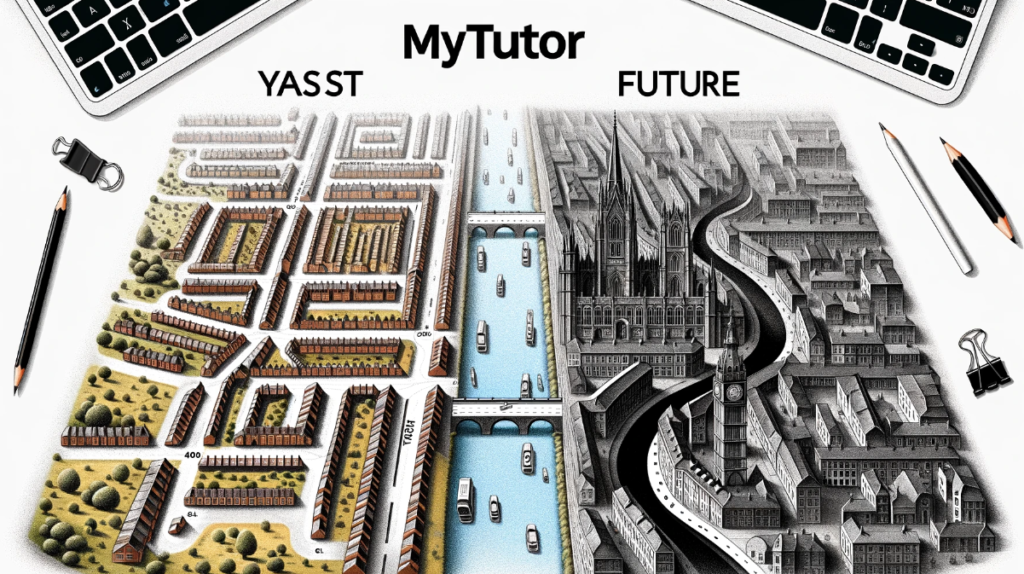
今回はIELTS Wring Task 1 Map(地図)問題の書き方と表現について説明します。
地図問題とは、都市(公園や病院などの公共施設も含む)の移り変わりや変化をリポートする形式の問題です。
地図問題の概要
タスク1は、図表の説明です。7-8割以上の確率で「グラフ問題」が出題されます。
これは捉え方を変えると、地図問題またはプロセスのいずれかの問題が、2-3割程度の確率で出題されるということです。
一発で、IELTSの目標スコアに到達する方はほとんどいないため、何度か受験をしていると必ず当たります。
10年前に、地図問題が出題される事はほとんどなかったことを考えると、飛躍的に出題の確率が上昇しています。
また、地図問題は、通常のグラフとは違う表現を使用する必要があるので、個別の対策が必要です!
▮ 地図の種類
地図問題は、三つの設問種類があります。
● 2つの地図 : 過去と現在の地図の比較
● 2つの地図 : 現在と未来の地図の比較
● 1つの地図 : 現在の地図
最も出題されやすいのは、過去と現在の地図の比較です。
以下のような地図です。
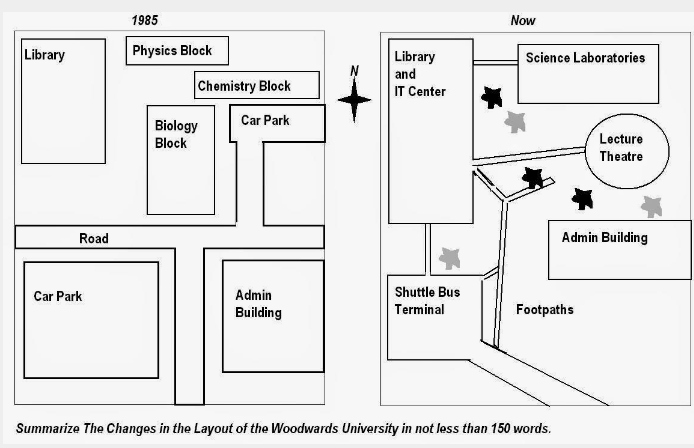
The maps show the changed of Woodwards University spatial during 1985 until now.
左側が過去のWoodwards University、右側が現在のWoodwards University となっています。
パっと見ただけでも、街が大きく変化していることが確認できますね。
また、徐々に出題が増えている印象があるのは「現在と未来の地図の比較」です。
このパターンは、主に都市開発についての設問であることが多いです。
地図問題の書き方と表現
- 地図問題独特の表現を使用する
- 過去形を主に使用する
- 受動態を多く使用する
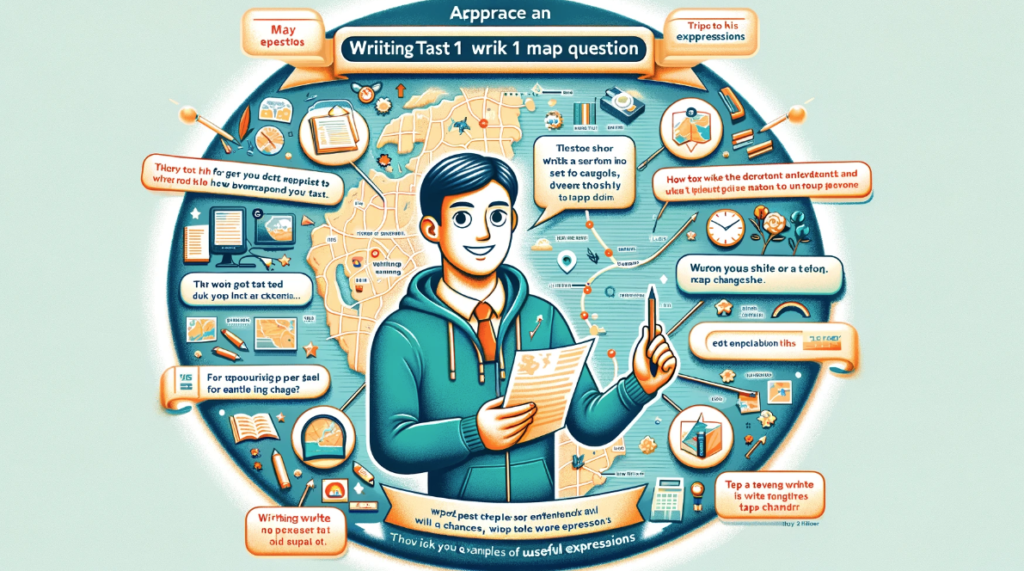
その他の図表問題と比べて、地図問題の表現は独特です。地図の「位置、方向性、変化」などは、確実に表現できるようにしておきましょう。
基本的に、地図問題は、過去形と受動態を中心に展開する問題です。ですので、この二つの文法項目は使いこなせるようにしておきましょう。
過去形や受動態を使用する理由は、地図内の都市や街の変化を表すためです。都市や街は、人ではないため受動態を、そして、変化はすでに起こった出来事なので過去形を使用します。
未来の地図が出てきた時のみ「未来完了形」を活用して表現します。
▮ 段落と内部構成
次に、地図問題の段落構成です。段落構成に関しては、その他の設問タイプと同じです。
つまり、4つのパラグラフで構成します :
Paraphrase Sentence(導入): 1文
Overview(概要): 1-2文
Detail 1 (詳細): 3文以上
Detail 2 (詳細): 3文以上
内部構成に関しても、その他の図表と同様の構成です。
導入
1文目- 質問のパラフレーズ
概要
1文目- 大きな変化1
2文目- 大きな変化2
詳細
1文目- 大きな変化1の詳細
2文目- 大きな変化1の詳細
3文目- 大きな変化1の詳細
詳細
1文目 – 大きな変化2の詳細
2文目 – 大きな変化2の詳細
3文目 – 大きな変化2の詳細
▮ 方向性を説明する際に役立つ表現とその例文
地図上の物体や建物の位置関係を正確に説明できます。IELTS Writing Task 1の地図問題では、これらの表現を活用して、変化や配置の違いを明確に伝えることが重要です。
● North of – 「…の北に」
The library is located north of the main entrance.
● South of – 「…の南に」
The parking lot is situated south of the sports centre.
● East of – 「…の東に」
The student accommodation is found east of the cafeteria.
● West of – 「…の西に」
The science building is west of the library.
● Adjacent to – 「…に隣接して」
The swimming pool is adjacent to the gym.
● Directly across from – 「…の真向かいに」
The art gallery is directly across from the main square.
● To the north/south/east/west of – 「…の北/南/東/西に」
The tennis courts are to the east of the football field.
● Between…and… – 「…と…の間に」
The coffee shop is located between the bookstore and the library.
● In front of – 「…の前に」
There is a bus stop in front of the entrance.
● Behind – 「…の後ろに」
The bicycle parking is behind the main building.
▮ 街や都市の変化を説明する際に役立つ動詞とその使用例
これらの動詞はエリア、ビル、木、工場、施設などに関連する変化を示すために使われます。
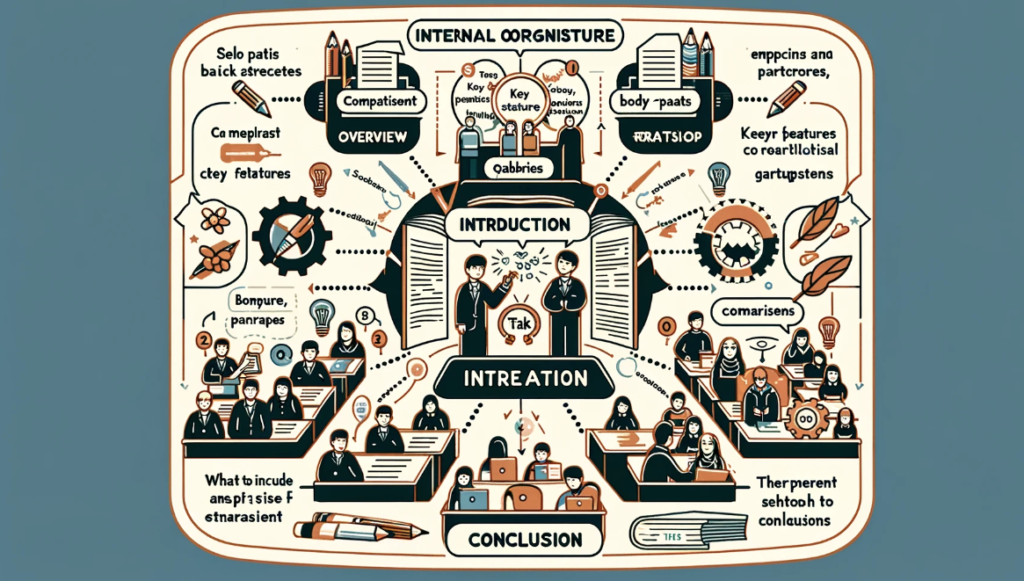
● Expand (拡大する)
“The industrial area expanded to include a new manufacturing plant.”
● Develop (開発する)
“A new residential development was constructed on the outskirts of the city.”
● Transform (変形する)
“The old factory was transformed into luxury apartments.”
● Renovate (改修する)
“The city hall was renovated to restore its historical appearance.”
● Rebuild (再建する)
“The community center, damaged by the storm, was completely rebuilt.”
● Demolish (解体する)
“Several dilapidated buildings were demolished to improve city safety.”
● Restore (復元する)
“The ancient ruins were carefully restored for public viewing.”
● Modernize (近代化する)
“The school’s facilities were modernized to support new educational technologies.”
● Clear (撤去する)
“The land was cleared of trees to make room for the new park.”
● Plant (植える)
“Hundreds of new trees were planted along the city streets.”
● Erect (建設する)
“A new monument was erected in the city square to honor veterans.”
● Upgrade (アップグレードする)
“The airport’s runways were upgraded to accommodate larger aircraft.”
● Convert (転換する)
“The old warehouse was converted into a modern art gallery.”
● Enlarge (拡大する)
“The parking lot was enlarged to reduce congestion during peak hours.”
● Beautify (美化する)
“The riverbank was beautified with the addition of walking paths and gardens.”
● Pave (舗装する)
“New roads were paved to improve access to the remote areas.”
● Relocate (移転する)
“The zoo was relocated to a larger, more natural environment outside the city.”
● Refurbish (改装する)
“The old theater was refurbished, including new seating and lighting.”
● Construct (建設する)
“A new bridge was constructed to ease traffic between the city and the suburbs.”
● Excavate (掘る)
“Archaeologists excavated the site, uncovering a previously unknown historical settlement.”
解答例
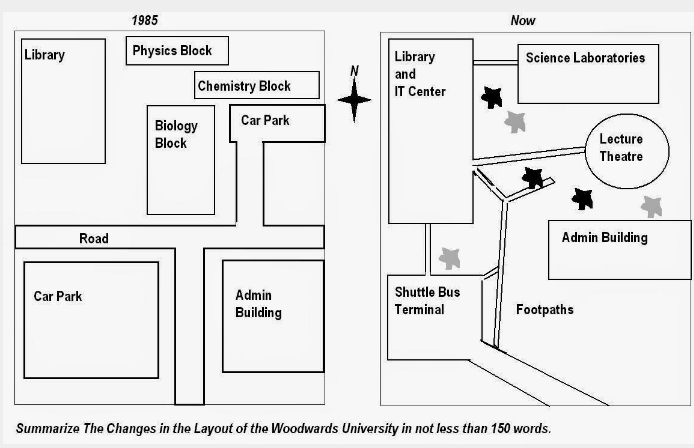
The Woodwards University’s map portrays the changes from 1985 until now. The most significant change is the demolition of many buildings over 20 years. It can be seen the transformation of some buildings with open-space.
First of all, the Woodwards University replaced the largest car park with a shuttle bus terminal and there was no car park anymore.The small car park was altered to be the lecture theatre between the science libraries and admin building. In addition to this, the road was change into shuttle bus line which connected to all buildings except the farthest, science laboratories and passes by admin building.
There have also combined some buildings. Physics block, chemistry block and biology block in the north east became science laboratories behind the lecture theatre. A library which had been opposite the biggest car park in the past was extended and joined with the IT center which now was in front of the shuttle bus terminal.
Finally, admin building which has large building in 1980 has also altered to be long building in the east. Moreover, the remnants of space was built open-space, such as footpaths. (187 words )







